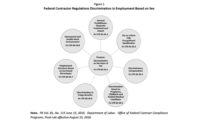The draft ISO 45001 standard, “Occupational health and safety management systems – Requirements with guidance for use,” has been released. This draft is referenced as ISO/DIS 45001.
The public comment period on this draft started on February 15, 2016. Importantly, this draft is also being voted on to decide whether it should be published, as it is currently written, as an international standard. The ballot on this question closes internationally on May 12, 2016.
Shortly before ISO/DIS 45001 was released, ISO sent out a press release entitled Why the World Needs ISO 45001. This press release was formatted as a series of questions and answers with the Chair of the ISO Project Committee developing ISO 45001. David Smith outlined the hope that the ISO 45001 standard will be endorsed by the business community and certification to the standard will become a supply-chain requirement across the globe.
The question being voted on in this ballot is not, however, whether the world needs a global OHS management system standard. That question was answered when this standard development effort was initiated by ISO in 2013. The question that must be answered is: “Is this draft standard good enough?”
A difficult challenge
Answering this question is difficult. No standard is ever perfect.
Voters must consider what criteria they should use to decide if the standard is good enough for publication.
Significant differences between various participants in this standard development effort come into play. Some want a standard that companies, particularly those in developing countries, can use to implement a management system to improve their safety performance -- in other words, a helpful tool.
Others seek a standard that sets specific performance requirements that organizations are expected to meet to prevent workers from being exposed to work-related hazards — in other words, a global regulation.
Still others want a standard that will help organizations with existing safety programs achieve “best in class” performance -- in other words, a continual improvement methodology for OHS professionals to use.
Lack of clarity concerning what goals this standard is to achieve has made ISO 45001 difficult to draft. It also makes determining whether the current draft is “good enough” difficult.
Concerns being voiced
Although it is still early in the review process, several organizations have expressed major concerns with this draft standard.
One significant concern is the lack of alignment between ISO 14001:2015, the newly revised environmental management system standard, and ISO/DIS 45001. Lack of alignment is particularly important for organizations that are already using OHSAS 18001 as the basis for an integrated EHS management system. This includes the approximately 100,000 organizations that are currently third-party certified to OHSAS 18001.
Throughout the standard development process, the ISO 14001 and ISO 45001 standards have become increasingly divergent. This is particularly the case for the clauses dealing with planning (clause 6) and operation (clause 8). The two standards are taking very different approaches to the requirements associated with risk management that were introduced into ISO management system standards via the mandatory text set out in Annex SL of Part 1 of the ISO directives.
One goal in requiring common high-level text in ISO management system standards is for all standards to address risks and opportunities using a common approach (so-called “risk-based thinking”). In this approach, an organization is initially required to determine the risks and opportunities that need to be addressed within the management system. Then, the organization must plan the actions needed to address those risks and opportunities. Finally, the organization must implement the processes and controls needed to execute the plans that have been made. The key to this approach is that risks and opportunities are prioritized for action based on their importance to the organization.
“Risk-based thinking” issues
The Annex SL text does not require that every risk and opportunity be addressed. It’s up to the organization to decide which risks and opportunities are important enough to be addressed. Unfortunately, the “risk-based thinking” approach set out in the Annex SL text has been edited out of ISO/DIS 45001. Instead, the standard seems to require organizations to address every risk and every opportunity that could possibly be identified. In addition, the standard appears to go on to require organizations to justify why every hazard has not been eliminated.
If the goal for ISO 45001 is to achieve the vision set out in the ISO press release -- that ISO 45001 is used by hundreds of thousands of organizations across the globe -- the requirements set out in the standard must be reasonable. It must also be clear to organizations that there are benefits associated with using the standard that are greater than the costs that will be incurred in changing their current approach.
Moving forward with publication of the current draft without addressing the concerns of users is unlikely to encourage organizations to embrace ISO 45001. Moving the standard forward “as is” may represent another missed opportunity for advancing the use occupational health and safety management systems, both in the United States and across the globe.
Interested in reviewing the ISO/DIS 45001 and commenting on the standard?
Contact the American Society of Safety Engineers (ASSE) for more information on obtaining a copy of the ISO 45001 standard and for information on how to participate in the public comment process.
Resources
ISO Press Release
ISO directives (Annex SL) link:


